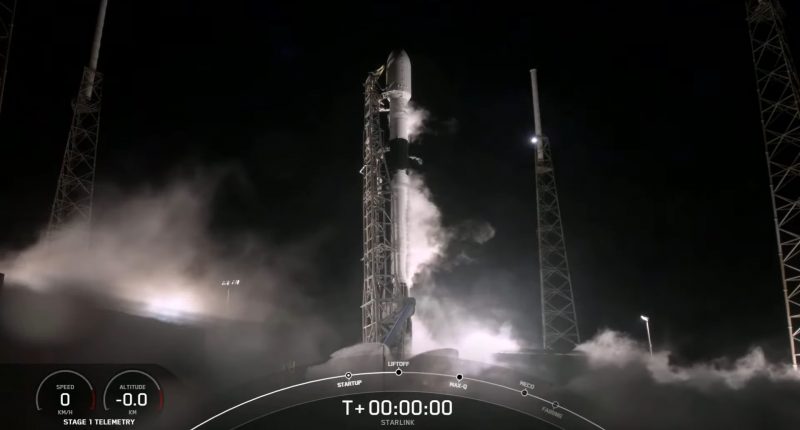SpaceX has launched another batch of 60 Starlink internet satellites into orbit, adding to its constellation that aims to deliver high speed low latency internet. However, for the first time in a long time, the company failed to recover the first stage booster with a landing on an off-shore drone ship, ending SpaceX’s running streak of 24 successes.
Deployment of 60 Starlink satellites confirmed pic.twitter.com/apZ7oTOvNk
— SpaceX (@SpaceX) February 16, 2021
The satellites were sent on a Falcon 9 rocket, taking SpaceX’s total count of satellites to 1145, including those that are experimental or have been de-orbited to date. Another launch with another 60 satellites on board is scheduled on Wednesday from Kennedy Space Center.
The 229-foot tall Falcon 9 booster was launched from Cape Canaveral in the morning. Nine minutes later, after the rocket had crossed the dense lower atmosphere, the first stage of the rocket returned to the planet to land on SpaceX’s drone ship “Of Course I Still Love You” in the Atlantic Ocean, but missed its target. A camera on the drone ship later showed the glow of a landing “burn” off to one side, but the booster never appeared and presumably fell into the ocean nearby. SpaceX’s launch commentator described the loss as “a bummer,” saying that it was unfortunate that they were not able to execute the landing that day.
It was the first unsuccessful booster recovery for SpaceX since the sixth Starlink mission in March 2020. Since then, the California rocket builder carried out 24 successful recoveries in a row before Monday’s mishap.
But the landing failure did not affect the outcome of Monday’s mission. The Falcon 9’s second stage, powered by a single vacuum-rated engine, fired twice as planned to reach the planned orbit about 45 minutes after liftoff. The 60 Starlinks were released to fly on their own about 20 minutes later.
SpaceX has the regulatory approval to launch more than 12,000 satellites, creating a network of relay stations providing two-way internet connectivity to customers globally.
“It does look like we did not land our booster on Of Course I Still Love You tonight,” said SpaceX manufacturing engineer Jessica Anderson. “It is unfortunate that we did not recover this booster but our second stage is still on a nominal trajectory.”
Starlink is a one-of-a-kind global satellite-based network powered by small, low-Earth orbit satellites. Starlink, in order to avoid high latency and inconsistent coverage, has ignored the traditional method of using broadband satellites positioned further out from Earth in a fixed orbit. SpaceX’s constellation-based approach improves latency and, on paper, provides more consistent coverage.
In time, SpaceX’s goal is to provide global coverage via Starlink, with an emphasis on areas where there has been weak coverage due to challenges to ground infrastructure.
Recently, SpaceX CEO Elon Musk had revealed plans for Starlink to go public, once the company “can predict cash flow reasonably well.”
